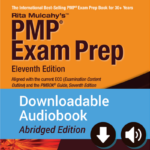Elicitation and Analysis
The third in a series of posts about the creation of our PMI-PBA Exam Prep study guide. You can also review the first domain on Needs Assessment or the second domain on Planning. PMI calls the third domain Analysis, but it is more appropriately named Elicitation and Analysis because it includes both topics.
Elicitation is the asking of questions and research needed to discover requirements. Analysis means to break down a whole into its components for study. So this domain includes the communications necessary to learn about the business and its requirements, along with the analysis work needed to break down the requirements and really understand the needed solution. All aspects of business analysis are important, but if you had to name the core of it all, this is it: Elicitation and Analysis.
PMI-PBA Exam Questions
Approximately 70 of the PMI-PBA exam questions are focused on elicitation and analysis and its techniques. It is the most important domain in which you need to be able to answer questions correctly. Many of the questions will ask you to choose the best elicitation or analysis technique to use for a given situation. This requires you to understand the value of each technique, not just memorize a list.
In this chapter of my book I’ll highlight the elicitation and analysis techniques you are likely to see on your exam. These techniques are not mutually exclusive, which means you will often use two or more of them at the same time. “How am I supposed to do two things at once?” you might ask me.
Well, eliciting involves communicating and analysis involves thinking. Don’t you frequently think while you are communicating? Yes. We do it all of the time. As we interview a stakeholder (elicitation) we also think about the business they are describing (analysis). You will also see that the same technique can be used in multiple domains to accomplish different results.
Elicitation and Analysis Techniques
There are more than 30 techniques that may be used in this domain, so this chapter has taken me the most time to write! While you aren’t expected to be an expert on all of these, PMI expects you to be aware of the large number of options you have to help with elicitation and analysis. To improve your skills, try new techniques and mentor others on them.
Set a goal for yourself to learn about a new technique every quarter or on every new project. If you have a few minutes right now, search on a technique you’ve never used and learn a little about how it might be useful. Have you ever used a decision table, an entity relationship diagram (ERD), or a story map?
I’ll have examples of all of these techniques in my book. In the meantime, check out our virtual training PMI-PBA Exam Prep course and our practice exam questions BA FASTrack Cloud for PMI-PBA to get ready for your exam! Three domains down, two to go. Watch for my next post on Traceability and Monitoring.
- Satisfying Stakeholders with Agile Requirements - January 25, 2023
- Business Analysis: The Best Way to Start a Project - March 2, 2022
- Three Proven Ways Analysis Prevents Scope Creep - December 29, 2021






